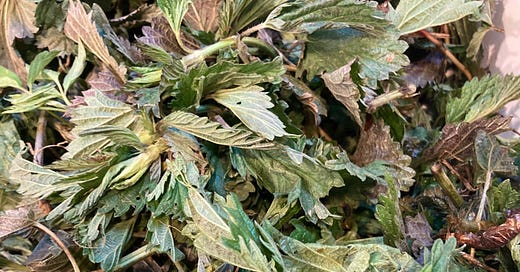“Nettles?!?” said my companion at dinner last night. “You’re cooking nettles? I’ve never heard of such a thing!”
Well, yes, I am cooking nettles, making a classic French soup, a potage velouté, warm, rich with butter and crème fraiche, delectable and healthy too with the nettles my foraging friend Petra gathered for me last week. I call it “classic” beca…
Keep reading with a 7-day free trial
Subscribe to On the Kitchen Porch to keep reading this post and get 7 days of free access to the full post archives.




